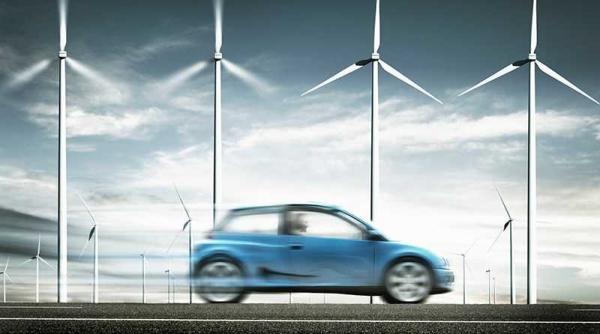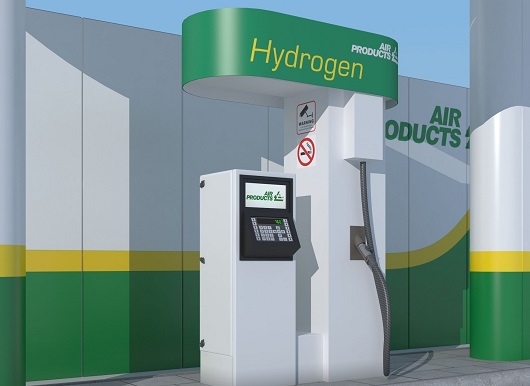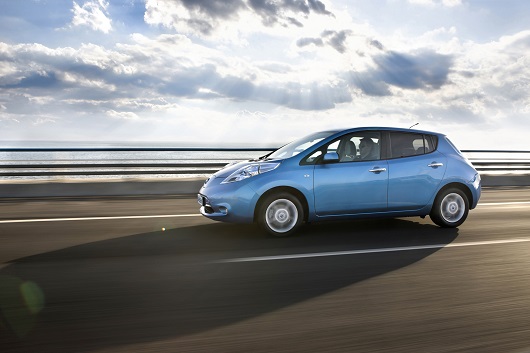Interesting facts about cars alternative fuel in numbers
Vehicles on alternative fuels in the figures

Key facts for plug-in hybrids, hybrid cars, cars running on fuel cells and electric cars.
Not so long ago the cars on alternative fuels refer only to the experimental category. On the roads it was possible to meet only some few models. Today manufacturers offer hybrid cars along with regular cars, and the price of electric cars continues to fall, as the production of batteries cheaper. The market is actively withdrawn cars on hydrogen fuel elements. Never before us was not so wide choice of cars to reduce fuel consumption. So, all you need to know about alternative cars in several categories:
-
1. The price (suggested retail price manufacturer)

Plug-in-hybrid: $27 1000 (2017 Toyota Prius Prime)
Hybrid: $24 685 (2017 Toyota Prius)
Fuel cells: $500 57 (2017 Toyota Mirai)
Electric car: $37 221 (2016-2017 average model)
In all categories of fuel cell vehicles is noticeably rapid decline in prices. The price of Prime, Prius, plug-in hybrid from Toyota, starts from $27 to 100, and the improvement of the economic situation, plus the progress in the technology of production suggests that this is only the beginning and the car will be even more accessible. A recent report by the Council for the protection of natural resources says that in the next ten years the price of batteries will continue to decline, then electric cars will have a price advantage. Additional bonuses also play a role. For example, the Toyota Mirai comes with free fuel for three years and a discount of $5 000 California to electric vehicles.
-
2. Tax incentives for United States

Plug-in hybrid tax credit of up to $4 500
Hybrid: the discount does not apply
Fuel cells: the discount does not apply
Electric car: up to $7 500
Tax credit for plug-in hybrids and electric cars depends on battery capacity. Tax law provides different tax incentives in different States and tends to vary (for example, tax relief ceased to apply to the hydrogen Honda FCV by the end of 2016). So keep track of information about all tax changes, to buy an electric car with the maximum benefit.
-
3. Much does it cost to travel 160 km (according to EPA)

Plug-in-hybrid: $2.51 (141 rubles)
Hybrid: $4.34 (245 rubles)
Fuel cells: $8.30 (469 rubles)
Electric car: $4.00 (226 rubles)
Reducing carbon emissions is not the only advantage, which causes many drivers to reduce fuel consumption. Joining the “green” movement, you can save a little green. Although, when it comes to fuel costs, come in a variety of factors, but one thing is certain — alternative fuels is less exposed to spikes in gasoline prices.
-
4. Fuel consumption in l/100 km (if you convert it to liters per 100 km)

Plug-in-hybrid: 1.77 liters per 100 km
Hybrid: 4.36 liters per 100 km
Fuel cells: 3.51 litres per 100 km
Electric car: 1.93 l per 100 km
In addition to reducing costs, there is nothing that increases the attractiveness of the car on alternative fuel, as its fuel consumption. With the improvement of technology, especially I recommend to pay attention to cars running on fuel cells.
-
5. Filling stations (according to the U.S. Department of energy)

Plug-in hybrid: about 182 878 (refueling stations and charging stations)
Hybrid: approximately 167 531 (petrol stations)
Fuel cells: 33
Electric car: 15 464 (40 630 specialized nodes) according to February 7, 2017.
New developing infrastructure of supply of fuel is one major obstacle for automakers and for consumers who want to use alternative fuels. Public-private enterprises, such as in Japan or Germany, have proved their practicality in creating new systems for the development of the hydrogen car infrastructure. There should be a greater number of stations throughout California and other States.
-
6. Distance

Plug-in-hybrid: 1029 km
Hybrid: 946-1018 km
Fuel cells: 502 km
Electric car: 191 km
Many drivers are concerned with the question of what is the distance they can travel by car on alternative fuel for a single charging or gas station if it’s a car on hydrogen fuel or hybrid. If the price of these technologies drops, power and the distance that cars are able to overcome, on the contrary, grow. Prius Prime 2017 transcends it possible for plug-in hybrids thanks to its lightweight design and incredibly powerful hybrid engine.
-
7. Refueling or recharging

Plug-in hybrid: at least five and a half hours using a standard power outlet (110/120 W); approximately 2 hours 10 minutes at the gas station (240V)
Hybrid: the refueling time of 5 minutes
Fuel cells: time for a refuel in about 5 minutes
Electric car: on average, 5.8 hours at 220/240 W; 21 hours on a standard 110/120 charger W
It takes much time to charge the electric vehicle at home. However, some manufacturers have taken care of the creation of stations Express charge, where to charge the car in less than one hour. Yet in this respect the advantage of cars running on fuel cells, for example, the Toyota Mirai, as refueling takes the same time as with a conventional car, only the driver and his passengers do not feel any bad smells of fuel.
-
8. Horsepower

Plug-in-hybrid: 121
Hybrid: 95
Fuel cells: 151
Electric: 120
Changing fuel, changing stereotypes about such things as horsepower. Before the standard indicators of horsepower were applied to the heavy cars and cars on alternative fuels a lot easier, so they need less horsepower to quite a fast ride.
-
9. Acceleration time from 0 to 96 km per hour

Plug-in-hybrid: 10.9 seconds
Hybrid: 10.5 seconds
Fuel cells: 9.0 seconds
Electric car: 9.6 seconds
Although this is a controversial question among enthusiasts, but the acceleration from 0 to 96 km per hour is often used to detect how fast the car can gain speed. These figures are purely practical application, for example, when you get into the flow of traffic on the track.
-
10. Coefficient of resistance

Plugin-hybrid: 0.25
Hybrid: 0.24
Fuel cells: 0.29
Electric car: no data
System alternative fuel is no good if the aerodynamics of the car leaves much to be desired. Toyota has developed a new streamlined design for your model Prius Prime to make it one of the most aerodynamic cars on the road in the middle of hybrids and conventional cars.
